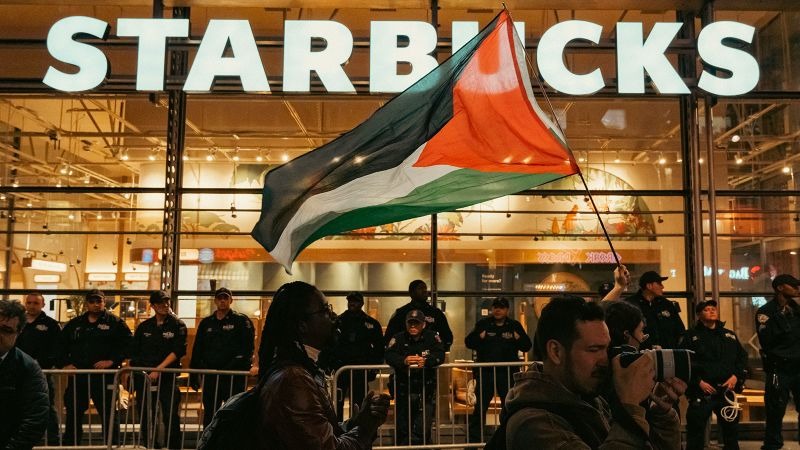
Slacktivism, the Genocide in Gaza, and Short-Form Vertical Video
Cat Jones’ article, "Slacktivism and the Social Benefits of Social Video," focuses on how
the sharing of media content to drive change regarding social and political issues bleeds into real-world impact–despite perceptions of superficiality and performative activism. This article’s argument inspired me to focus on a key, timely case study of the Palestinian-Israeli conflict and the media uproar as a result, as this article is even more relevant due to the uprise in vertical short-form video on channels such as TikTok, YouTube, and Meta.
In the past year, some Americans, particularly those under 35, have championed
Starbucks as a brand villain for funding the genocide of the Israeli-Palestinian conflict, and a boycott has resulted. The boycott is fueled through vertical videos, and the underlying theme is retroactive digital shame and bullying, with waves of comments flooding in if a Starbucks cup is visible in someone’s video. No one is currently excluded from this shame. However, it is unclear if it is making a tangible impact or just driving awareness amongst an audience already informed and opinionated on this conflict. Several news articles disbelieve there is any real impact to this campaign.
For example, Margaret Wasco’s piece in the Fordham Political Review expresses how the
boycott, driven by misinformation and social media frenzy, lacks the tangible impact many
participants had hoped for. Wasco notes that despite good intentions, the boycott does little to improve the conditions for civilians in Gaza or Israel. This perspective aligns with Jones’ critique of slacktivism, where surface-level engagement does not always translate into meaningful action.
Esther Park in the Caxy News empathizes with the challenges Starbucks is facing in the
digital age for its brand, and the tone screams public relations and lacks humanity. Park’sobservations resonate with Jones’ findings that while social media can mobilize support, it could also encourage polarization and complexities that can dilute the movement’s effectiveness.
For me, the key critique of using social video, particularly short-form, is the way it
flattens the possibility of action. In the example of the Starbucks boycott, why did Americans stop at one brand? Why not target oil companies, grocery stores, and other key brands to amplify the impact? It underscores Jones’ argument of slacktivism and furthers the philosophy that it is challenging for media activism to extend beyond a performative nature, as this case study highlights a social change campaign that makes one feel better but does not inconvenience the performer.
References
Fordham Political Review. (2024, May 16). The Starbucks boycott: A useless campaign to help Gaza or Israel (and how Americans can actually make a difference). Fordham Political
Review. https://fordhampoliticalreview.org/the-starbucks-boycott-a-useless-campaign-to-help-gaza-or-israel-and-how-americans-can-actually-make-a-difference/
Jones, C. (2015). Slacktivism and the social benefits of social video: Sharing a video to 'help' a cause. First Monday, 20(5). https://doi.org/10.5210/fm.v20i5.5855
Park, E. (2024, February 13). Impact of social media on Starbucks boycott. Caxy News.
https://caxynews.com/7452/
Virata, P. (2024). Boycotts and strikes: A misguided American mess. The Stuyvesant Spectator. https://stuyspec.com/article/boycotts-and-strikes-a-misguided-american-mess
Post a comment